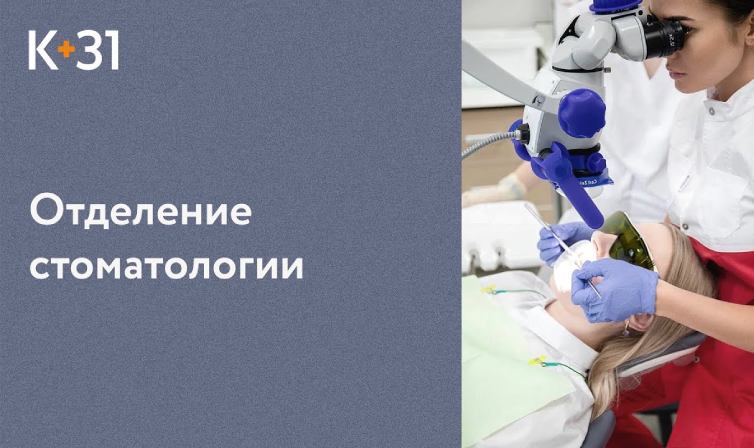Treatment of gingivitis

specialists

equipment

treatment
FAQ
Why does gingivitis occur?
The main cause of gingivitis is the accumulation of bacterial plaque on the teeth, which leads to inflammation of the gums. Plaque is a soft, easily removed layer that accumulates on the surface of teeth and contains bacteria. If it is not removed regularly, it can mineralize, turning into stone that is difficult to remove with regular cleaning. These formations continuously irritate the gums, causing them to become inflamed.
In addition to poor hygiene, there are a number of factors that can contribute to the development of gingivitis. These include:
- Changes in hormonal levels, such as during pregnancy or puberty
- Diabetes mellitus, especially if it is not well controlled
- Insufficient intake of vitamin C
- Immunodeficiency conditions, both congenital and acquired, including HIV infection
- Some medications may affect the condition, such as drugs that cause dry mouth
- Smoking is also a significant risk factor
Also, gingivitis can be caused by trauma, such as from improper toothbrush use or overbite. Dental procedures such as dentures or fillings can also contribute to inflammation if not performed correctly.
It is important to understand that gingivitis is a reversible disease, and with timely and proper treatment, the consequences can be avoided. However, if left untreated, it can develop into periodontitis, which already threatens tooth loss.
How does the disease develop?
Clinical signs may vary from mild to more severe, depending on the stage and form of the disease. In the initial stages of gingivitis, your gums may experience mild discomfort and increased salivation. Changes are visually noticeable: the gums become bright red, swell and increase in volume. These changes are the first signs of inflammation.
The main and most common symptom of gingivitis is bleeding gums, especially noticeable when brushing your teeth or eating hard foods. This phenomenon indicates increased sensitivity and inflammation. Also characteristic is a feeling of pain when touched and the appearance of bad breath due to the activity of bacteria.
With the development of gingivitis, so-called periodontal pockets can form. They form when inflamed gums begin to pull away from the teeth, creating spaces where food debris and bacteria accumulate, increasing the inflammation and progression of the disease.
During chronic gingivitis, symptoms may not be as obvious. However, there is often a noticeable thickening of the tissue that can lead to partial overlap of the dental crowns, thereby making it difficult to maintain a clean mouth.
There are also less common types, such as desquamative and ulcerative. They are manifested by the formation of inflammatory blisters and ulcers, which increase the patient’s discomfort and require an individualized approach to treatment.
Why is gingivitis dangerous?
Gum gingivitis is not only an uncomfortable condition, but also a potentially dangerous condition. Of particular concern is the acute variant, which, in the absence of adequate treatment, can progress to periodontitis, characterized by deep damage to periodontal tissues and possible subsequent destruction. In extreme cases, it can develop into an ulcerative-necrotic form with subsequent tissue necrosis. Gingivitis can cause inflammation around the tooth root, infection of the jaw bones, kidney disease and even heart disease.
How to recognize gingivitis?
Diagnosing gingivitis is a multi-step process that begins with a thorough medical history. It is important to consider that gingivitis can be either an independent disease or a symptom of other systemic diseases, so it is important to pay attention to the general health of the patient. In some cases, the dentist may refer you for a consultation with an endocrinologist, hematologist or gastroenterologist to rule out or confirm the presence of concomitant diseases that may affect the condition of the gums.
In the process of diagnosing gingivitis, the dentist conducts a number of specialized studies:
- Probing. This method allows you to assess the state of attachment of the gums to the teeth and detect the presence of pathological pockets
- Staining with iodine-containing solutions. This allows you to determine the presence of inflammation: with gingivitis, the gums turn shades of brown
- Assessment of the level of oral hygiene. This includes checking how well the patient brushes and removes plaque
- Panoramic shot. This study is necessary to assess the condition of the bone tissue, as well as to review all teeth, fillings and crowns
In addition to these methods, additional tests, such as general and biochemical blood tests, may be prescribed to assess your overall health and identify possible systemic disorders.
Treatment of gingivitis
Treatment of gingivitis includes an integrated approach that is aimed at eliminating the causes of the disease, relieving symptoms and preventing its recurrence. After a thorough examination, the periodontist develops an individual treatment plan.
You can also fight gingivitis at at home.

The treatment plan may include the following steps:
- Dental treatment This may include treating tooth decay, restoring defective fillings, and professional teeth cleanings to remove plaque and tartar.
- Bite correction If necessary, the dentist may refer the patient to an orthodontist or podiatrist to correct malocclusions, which can help relieve pressure on the gums
- Drug treatment Depending on the degree of the disease and its form, antibiotics, immunomodulators and vitamin-mineral complexes may be prescribed. Such drugs help fight infection, strengthen the immune system and restore gum health.
- Physiotherapeutic procedures May include electro- and phonophoresis, magneto- and laser therapy, which helps speed up the healing process
- Gum massage Conducted in the clinic and helps improve blood circulation and stimulate metabolic processes
- Surgical intervention Used in cases of severe hypertrophy of gum tissue, includes excision of overgrown tissue and plastic surgery of the gingival contour
How to cure gingivitis at home?
Traditional methods of treating gingivitis can be used as a complement to traditional ones, but it is important to understand that they cannot replace professional medical intervention. Before using any folk remedies, it is recommended to consult a dentist.
Remember that folk remedies can only reduce symptoms, but not eliminate the cause of the disease. Therefore, it is important to combine them with professional treatment and follow the dentist’s recommendations.

Here are some of the most common and
available methods:
- Herbal rinses Natural solutions based on medicinal herbs such as chamomile, calendula and sage are effective due to their anti-inflammatory and antiseptic properties. To prepare, you need to pour a tablespoon of the selected herb with hot water, leave and strain. Regular use of this infusion when rinsing the mouth up to 4 times a day helps reduce inflammation and reduce bleeding gums
- Salt rinses Dissolving a teaspoon of table or sea salt in a glass of warm water and using this solution as a mouth rinse can also help reduce inflammation and kill bacteria.
- Propolis Has antiseptic and healing properties. You can use the tincture as a rinse or apply to the gums.
- Aloe vera Aloe vera juice or gel can be applied directly to the gums to relieve inflammation and promote healing
- Tea tree oil Has strong antiseptic properties. A few drops of oil added to rinse water can help fight oral infections.
- Beet juice Freshly squeezed beet juice can be used as a mouth rinse and has antiseptic and restorative properties.

Modern methods of diagnostics and dental treatment at "K+31"
Our doctors

This award is given to clinics with the highest ratings according to user ratings, a large number of requests from this site, and in the absence of critical violations.

This award is given to clinics with the highest ratings according to user ratings. It means that the place is known, loved, and definitely worth visiting.

The ProDoctors portal collected 500 thousand reviews, compiled a rating of doctors based on them and awarded the best. We are proud that our doctors are among those awarded.
Make an appointment at a convenient time on the nearest date
Price

Callback request
Services
Orthopedic dentistry
Orthodontics Treatment of periodontitis Children's dentistry 3D scanning Children's dental treatment Сaries treatment Consultation of a dentist orthopedic prosthetist













































About the disease
Gingivitis is the primary stage in the development of periodontal pathologies, manifested in the form of gum inflammation. This condition occurs as a result of the accumulation of bacterial plaque on the teeth, which is the main cause of the inflammatory process. The gums become red, swollen, and often bleed when brushing or flossing.
It is not accompanied by severe pain, but may cause discomfort in the oral cavity. Without appropriate treatment, it can develop into periodontitis, a more complex disease that leads to weakening and loss of teeth.
Consider an example: a person ignores bleeding gums for a long time. Over time, this can provoke a worsening of the inflammatory process and the transition of gingivitis to periodontitis, which, in turn, can lead to weakening of tooth roots and their subsequent loss.